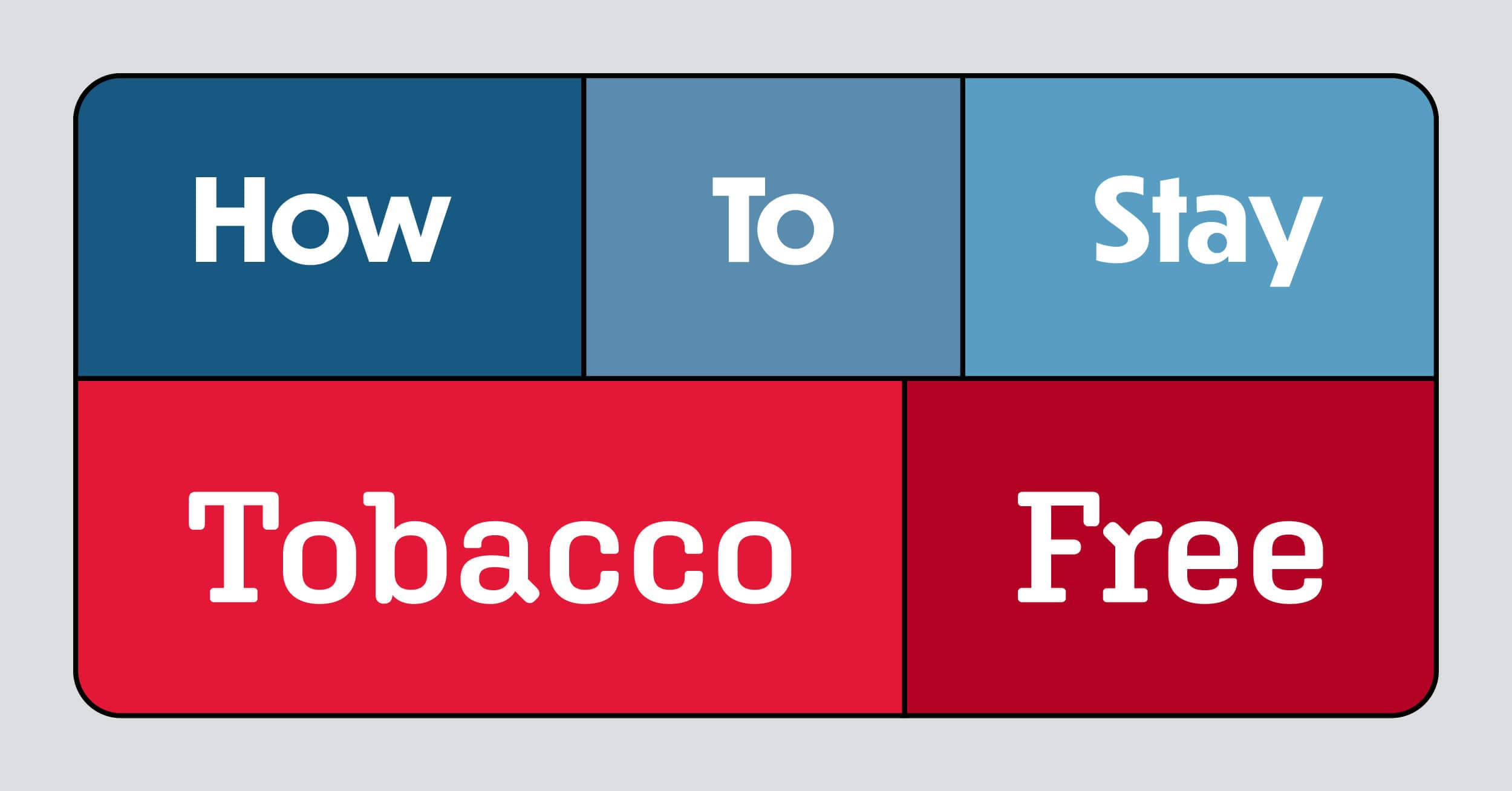Putting Mindfulness into Practice: 4 Simple Tips for Staying Tobacco Free
Over the last two decades, mindfulness has become a popular – and effective – way to lessen or relieve serious…

Over the last two decades, mindfulness has become a popular – and effective – way to lessen or relieve serious conditions including stress, anxiety, depression and substance use, including tobacco.
It really works! One study showed mindfulness nearly doubled the chances that participants would stay tobacco free for at least four months after quitting. So, what is mindfulness, and how can it help you on your quit journey? Let’s dive in.
How Mindfulness Helps You Quit Tobacco
After quitting tobacco for at least a month, the body conquers nicotine addiction at the chemical level. When cravings hit, it’s not because the body is screaming out for nicotine. Something else is going on. Cravings often start with strong emotions or triggers — like drinking coffee, eating a big meal or driving to work. Mindfulness helps tackle cravings at the source.
When practicing mindfulness, learn to become aware of these feelings before they get out of control. Here are four tips for beating tobacco cravings and keeping a tobacco-free streak going strong.

Stress, anxiety and sadness tend to build up over time. Before we know it, our emotions are out of control or overwhelming — so we reach for tobacco to put a band-aid on our feelings. With mindfulness, we have the power to stop this process in its tracks, but it takes practice.
Throughout the day, pause and assess how you are feeling. Are you feeling stressed? Angry at a coworker, customer or loved one? Or… maybe you feel great! However you feel, take a moment to recognize it — but don’t judge yourself. You’re only human, and we all have emotions.

If you’re feeling down or stressed, pause for a couple of minutes and say some silent positive sentences – which are called affirmations. It might sound silly, but the words we say to ourselves deeply affect our wellbeing. As you repeat some affirmations, take slow, deep breaths. You might even try “box breathing,” a method used by the Navy Seals to keep calm during combat. Slow breathing is a great tool for calming ourselves down. Give it a try!

How to box breathe like a Navy Seal:
Step 1:
-
- Inhale slowly through your nose while mentally counting to four.
- Concentrate on filling your lungs with air.
- Let your body feel how air is filling your lungs.
Step 2:
-
- Hold your breath and mentally count to four again.
Step 3:
-
- Exhale slowly through your mouth while mentally counting to four.
- Concentrate on getting all the air out of your lungs at once.
Step 4:
-
- Repeat steps 1 through 3 until you feel more relaxed.

Sometimes, we can’t stop cravings before they happen — and ignoring our feelings often makes them stronger. Urge surfing is a technique to deal with cravings without using tobacco. It relies on the fact that urges tend to weaken and disappear within 20 to 30 minutes. Think of your craving as a “wave” that will soon pass, and follow these steps:

- Choose a quiet, comfortable location to sit.
- Think about specific areas of your body that are affected by your craving, such as an upset stomach or tension in your chest or shoulders.
- Describe how you feel in a calm way.
- Focus on your breathing, but don’t try to change your breath.
- Wait one or two minutes, then shift your attention back to your body.
- Alternate between focusing on your breath and your body until your craving passes. Your craving is the wave, and your breath is the surfboard.
- After your craving weakens or disappears, get up and continue with your day.

At its core, mindfulness is just being aware of our thoughts, feelings, bodies and the environment around us — with a curious, nonjudgmental attitude. Journaling is a great way to expand self-awareness by putting our thoughts and feelings on paper. Journal prompts give us a topic to think about as we explore our thoughts and feelings. Grab some paper or a notebook and try one of these prompts each day for a week:
- What are five things I’m grateful for?
- How do I feel about myself right now?
- I forgive myself for…
- I love myself because…
- To make myself healthier, I could start…
- I will stop telling myself…
- What are my biggest fears and how do they hold me back?

Mindfulness meditation is designed to increase self-awareness and help us get in touch with our feelings and bodies. If you’ve never practiced meditation, it may help to start with a guided session. Guided meditations give gentle instructions for focusing the mind and accepting yourself as you are.
Want to give it a try?
We created these guided meditations just for you.
Relaxing the Body
Female Voice
Male Voice
Breathing for Calm
Female Voice
Male Voice
Stress Relief Meditation
Female Voice
Male Voice
Mindfulness:
A Powerful Tool for Staying Tobacco Free
As you build a tobacco-free lifestyle, your mind is your most powerful ally. Practicing mindfulness gives you greater emotional control — and it warns you when you’re about to get off track. Try some mindfulness exercises today. You may just be surprised at the results!



